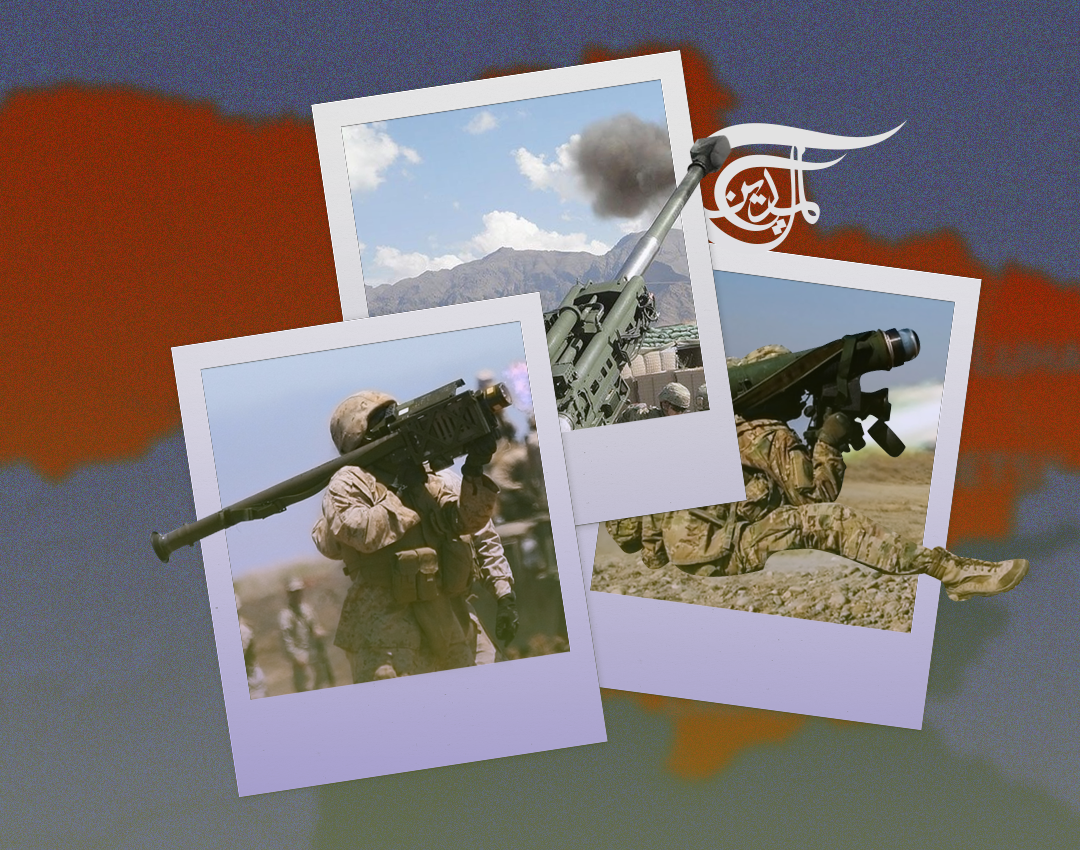Who is the end user of the US weapons sent to Ukraine?
A detailed look into the deliveries of US armaments and weapons shipments to Ukraine.
-

The US has few ways to track the substantial supply of anti-tank, anti-aircraft, and other weaponry it has sent across the border into Ukraine
Introduction
The U.S. Secretary of Defense Lloyd Austin said that the U.S. wants Russia's military capability weakened so that it cannot carry out another invasion (April 25, 2022). So the U.S. is arming Ukraine against Russia.
The Biden administration sees the transfer of hundreds of millions of dollars' worth of equipment to be vital to the Ukrainians' ability to hold off Moscow's invasion. But the risk is that some of the shipments may ultimately end up in unexpected places.
The decision of the given short-term needs of Ukrainian forces for more arms and ammunition will lead to the long-term risk of weapons ending up on the black market or in the wrong hands was accepted.
Usually, the U.S. military has a great concern about the end-user of the US made weapons and equipment. They have specialized teams to track these weapons and equipment in almost all countries (except North Korea).
This strict rule does not much apply in the case of Ukraine, where there is a great risk. This conscious risk is up to the Biden administration to take.
1- The goal
The goal now is what Defense Secretary Lloyd Austin called a “weakened” Russia, one that won’t be able in the future to “do the kinds of things that it has done in invading Ukraine.”
But first, the supplies of weaponry, notably long-range artillery, have to be delivered, and the Ukrainians have to be trained to use new Western systems, a process that is underway but will take time.
The United States and its allies are speeding up the deliveries. But transferring them from Eastern Europe into Ukraine is going to require an unprecedented logistical effort at a time when the main supply lines are increasingly being targeted by Russian missiles.
-

Figure 1: Javelin missile -

Figure 2: Stinger missile -

Figure 3: S-300 missile
2- The Russian Threat
U.S. Officials are less concerned that the weapons may fall into the hands of the Russians.
A source familiar with the US intelligence said that it does not appear that Russia has been actively attacking western weapons shipments entering Ukraine – although it is unclear exactly why especially since the US has intelligence information that the Russians want to and have discussed doing so both publicly and privately.
There are a number of theories for why the shipments have so far been spared, including that Russian forces simply can't find them - the weapons and equipment are being sent over in unmarked vehicles and often transported at night.
It could also be that the Russian forces are running out of munitions and don't want to waste them targeting random trucks unless they can be certain they are part of an arms convoy.
In general, Russia doesn't have perfect intelligence visibility into Ukraine, and their air capabilities over western Ukraine, where the shipments are coming in, are extremely limited because of Ukrainian air defense systems.
The Pentagon says it has not yet seen Russian attempts to interrupt the weapons transfers or the shipments moving inside Ukraine.
3- Tracking the supplies
The US has few ways to track the substantial supply of anti-tank, anti-aircraft, and other weaponry it has sent across the border into Ukraine, a blind spot that's due in large part to the lack of US military on the ground in the country – and the easy portability of many of the smaller systems now pouring across the border.
Both current US officials and defense analysts say that the risk is in the long term, because some of those weapons may wind up in the hands of other militaries and militias that the US did not intend to arm.
US intelligence sources have fidelity for a short time, but when it enters the fog of war, they have almost zero. "It drops into a big black hole, and you have almost no sense of it at all after a short period of time."
In making the decision to send billions of dollars of weapons and equipment into Ukraine, the Biden administration factored in the risk that some of the shipments may ultimately end up in unexpected places.
4- The American politics
The Biden administration is giving new, heavier weapons to Ukraine because the US military is not on the ground, and the US and NATO are heavily reliant on information provided by Ukraine's government.
Ukraine has an incentive to give only information that will strengthen its case for more aid, more arms, and more diplomatic assistance.
Top of Form
The US and western officials have offered detailed accounts of what the West knows about the status of Russian forces inside Ukraine: how many casualties they've taken, their remaining combat power, their weapons stocks, what kinds of munitions they are using, and where.
But when it comes to Ukrainian forces, officials acknowledge that the West - including the US - has some information gaps. Western estimates of Ukrainian casualties are also not accurate, according to some sources familiar with US and western intelligence. "It's hard to track with nobody on the ground".
5- The risk
Recently, the US agreed to provide Kyiv with the types of high-power capabilities some Biden administration officials viewed as too much of an escalation risk, including 11 Mi-17 helicopters, 18 155 mm Howitzer cannons, and 300 more Switchblade drones.
a- Where weapons are used
The U.S. Defense Department couldn’t track the weapons sent for particular units, according to Pentagon press secretary John Kirby.
Trucks loaded with pallets of arms provided by the Defense Department are picked up by Ukrainian armed forces - primarily in Poland - and then driven into Ukraine, "then it's up to the Ukrainians to determine where they go and how they're allocated inside their country."
b- Monitoring Tools
A congressional source said that while the US is not on the ground in Ukraine, It has tools to learn what's happening, noting that the US has extensive use of satellite imagery and both the Ukrainian and Russian militaries appear to be using commercial communications equipment.
The US military views the information it's receiving from Ukraine as generally reliable because the US has trained and equipped the Ukrainian military for years, developing strong relationships. But that doesn't mean there aren't some blind spots, such as on issues like the operational status of Ukraine's S-300s.
Conclusion
Finally, the western supply to Ukraine is certainly the largest supply to a partner country in a conflict. The Biden administration and NATO countries say they are providing weapons to Ukraine based on what the Ukrainian forces say they need, whether it's portable systems like Javelin and Stinger missiles or the Slovakian S-300 air defense system.
Javelin and Stinger missiles and rifles and ammunition are naturally harder to track than larger systems like the S-300. Although Javelins have serial numbers, there is little way to track their transfer and use.
The biggest danger surrounding the flood of weapons being funneled into Ukraine is what happens to them when the war ends. Such a risk is part of any consideration to send weapons overseas.
For years, the US sent arms into Afghanistan, first to arm the “mujahidin” in their fight against the Soviet army, then to arm Afghan forces in their fight against the Taliban.
Some weapons ended up on the black market including anti-aircraft Stinger missiles, the same kind the US is now providing to Ukraine. Some US officials feared that they could be used by the Taliban against the United States.
Other weapons have ended up arming US adversaries. Much of what the US left behind to help Afghan forces became part of the Taliban arsenal after the collapse of the Afghan government and military. The problem is not unique to Afghanistan. Weapons sold to other countries found their way into the hands of terrorists. The risk of a similar scenario happening in Ukraine also exists.
In the Defense Department, there are raising concerns about the end-use monitoring of weapons being sent to Ukraine.

 Joe Joubran
Joe Joubran
 8 Min Read
8 Min Read









